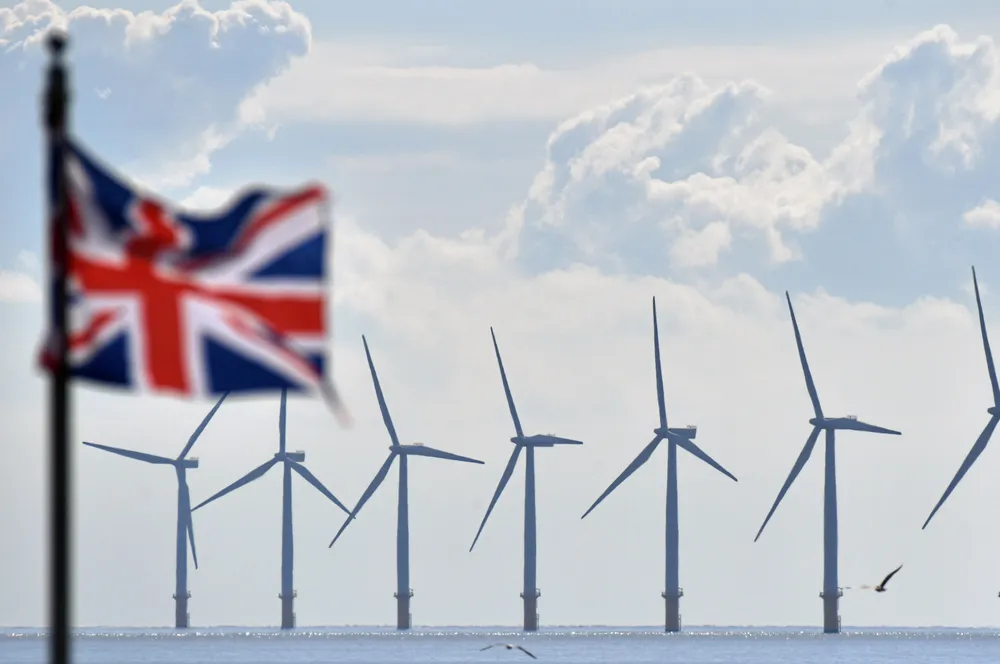Record UK curtailment payout hands critics stick to beat wind power
Industry experts say solutions such as grid build-out needed, but warn that climate sceptics are using data to back up 'flawed arguments'

The UK paid a record sum to keep wind turbines switched off last month, highlighting the lack of grid capacity to send abundant Scottish green power to southern demand centres, with sceptics leaping on the data to criticise energy transition plans.
In an August that saw Storm Lilian batter the UK with 113km/h winds, the country on one morning last month was generating what appeared to be a record 89.7% of its electricity through its 30GW fleet of wind farms.
The flip side of this was that the UK was also forced to curtail (or ‘constrain’) 1.2TWh of wind power that could not be used, according to GB Renewables Map, a website run by senior Octopus Energy data visualisation engineer Robin Hawkes.
That resulted in the government having to pay £63m ($83m) to wind farm owners, according to the website, comfortably more than the next highest month recorded for such payments, October last year (£53m).
There was so much excess wind last month that it represented over a quarter of curtailment for the year to date, which GB Renewables Map puts at around 4.4TWh and £228m in payouts.
With a third of the year yet to come, 2024 looks set to smash curtailment records set in 2023, when 3.8TWh of wind was wasted at a record cost of £273m.
The 2024 figures were largely mirrored by the Renewable Energy Foundation (REF), a wind-sceptic organisation that also publishes curtailment data. REF estimated that £66m of curtailment payments were made last month and £237m for the year to date, from 4.6TWh of curtailed wind power.
REF director John Constable – also energy editor for the Global Warming Policy Foundation, another climate sceptic think tank – argues the latest figures show that many of these wind farms “should never have been built in the first place.
“The generous, and arguably unjustified, constraint payments to wind power, particularly in Scotland, are a clear indication that when green targets are engaged the energy businesses can get away with murder.”
Grid upgrades and pumped hydro buildout crucial
Energy companies receive curtailment payments when there is no way of using power from their assets. This is a particular problem for the growing fleet of variable wind and solar farms, which don’t always produce power when or where it is most needed.
This problem was accentuated by the former Conservative government’s almost decade-long onshore wind ban, which has resulted in Scotland (population 5.6 million) having 10GW of capacity and England (population approaching 60 million) with 3GW.
Because there is limited north-south grid transmission, and a lack of energy storage capacity, Scottish wind power in particular is often curtailed. This is borne out by the figures, which show Scottish wind farms received the most payments, chief among them developer Ocean Winds’ 1.1GW Moray East offshore array.
“A modern electricity network capable of delivering renewable energy to consumers, as well as investment in large scale, long duration energy storage solutions, such as pumped storage hydro, will be the best way to balance supply and demand within the UK’s energy system and minimise the cost of constraint payments,” said Claire Mack, chief executive of Scottish Renewables.
“The quicker we build more electricity transmission infrastructure the quicker we will reduce constraint payments while connecting more renewable energy to UK consumers, creating jobs and bringing investment to Scotland.”
'Green sceptics use data to back flawed arguments'
Lorenzo Sani, a power analyst at climate think tank Carbon Tracker, said the curtailment figures have “given green energy sceptics a good excuse to reiterate their flawed arguments.
“However, it is important to highlight that for every £1 paid to wind farms for curtailment, £2 or more are paid to gas power plants to increase their output and compensate for the curtailed electricity.”
Between 2021 and 2023, Carbon Tracker estimated the “total cost of wind congestion amounted to £2bn,” he said. But only around 30% of that went to wind farms, with the rest going to “gas power plants and their high operating costs.”
Indeed, he said the record month for curtailment payments overall – as opposed to just wind – came in November 2021, when £40m was paid to wind farm owners and £160m was paid to gas generators (who received £120m last month).
Renewables curtailment could, he said, “become a bigger issue if the UK fails to invest adequately in reducing balancing costs through battery storage and addressing the root problem by expanding grid capacity.”
To consider the constraint payments in isolation “ignores the bigger picture,” according to James Glennie, an Edinburgh-based consultant and 25-year veteran of the global wind power sector.
“UK domestic supplies of oil and gas are running out and are expected to decline to close to zero by 2050,” he said. “This leaves the UK incredibly vulnerable to shortages on the international market.”
“This is not a theoretical point,” he said, pointing to the energy crisis sparked by Russia’s invasion of Ukraine in 2022. As Europe went cold turkey on Russian gas, electricity prices soared all over the continent.
In the two years after the invasion, he cited UK Office for Budget Responsibility Figures that showed the cost of UK government support over two years shielding households and businesses from those price rises came to a staggering £78bn.
Had the renewables rollout in the UK not been constrained by the former Conservative government, Glennie said “that cost would have been significantly less, as wind and solar would have been displacing gas to a much greater extent”.
“Renewables expansion has to proceed apace – if it does not and if the UK remains increasingly dependent on imported gas as our domestic reserves continue to decline, the next gas price shock will almost certainly be very much worse.”
(Copyright)